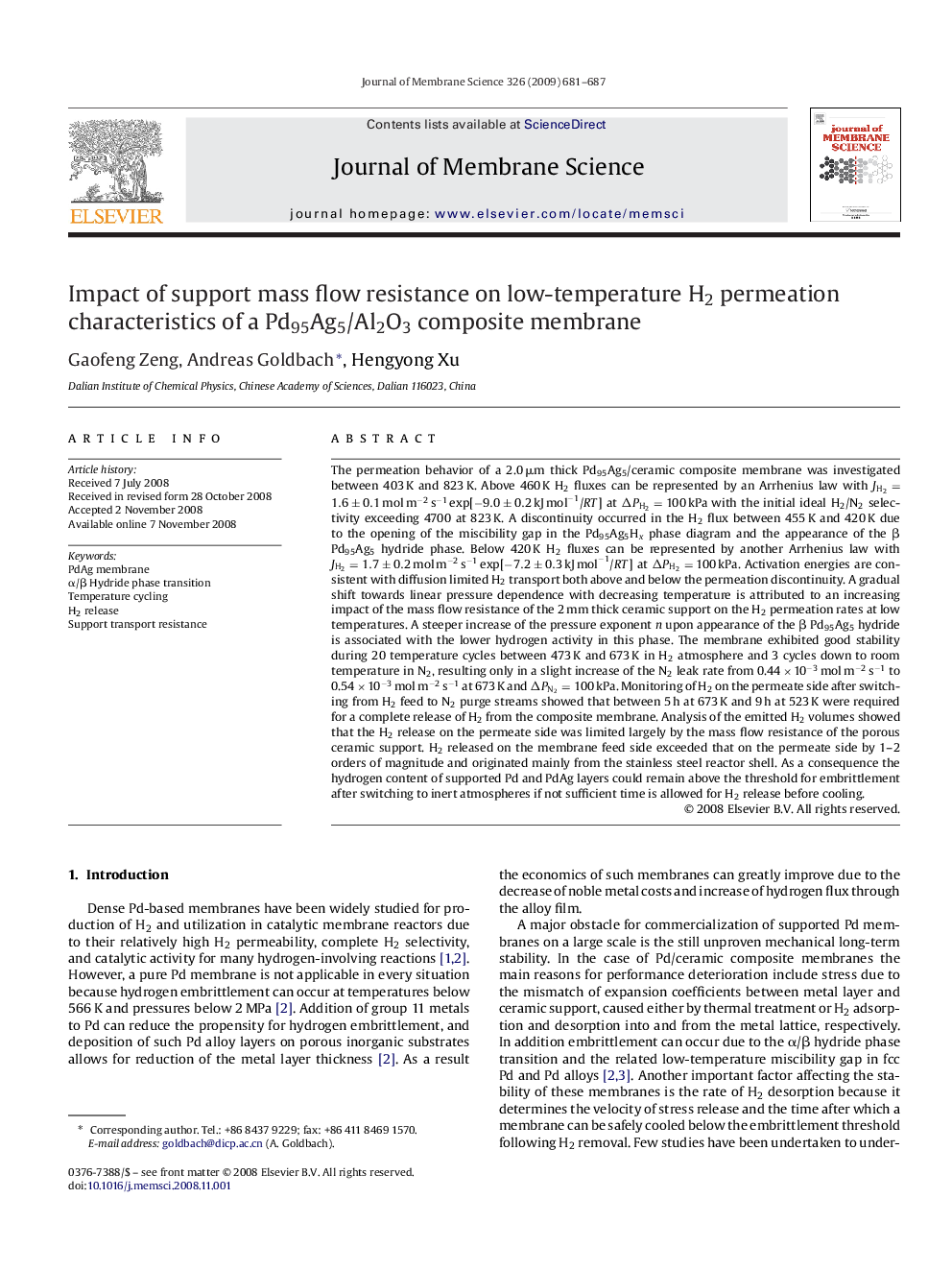| کد مقاله | کد نشریه | سال انتشار | مقاله انگلیسی | نسخه تمام متن |
|---|---|---|---|---|
| 637430 | 883685 | 2009 | 7 صفحه PDF | دانلود رایگان |

The permeation behavior of a 2.0 μm thick Pd95Ag5/ceramic composite membrane was investigated between 403 K and 823 K. Above 460 K H2 fluxes can be represented by an Arrhenius law with JH2=1.6±0.1 mol m−2 s−1 exp[−9.0±0.2 kJ mol−1/RT]JH2=1.6±0.1 mol m−2 s−1 exp[−9.0±0.2 kJ mol−1/RT] at ΔPH2=100 kPa with the initial ideal H2/N2 selectivity exceeding 4700 at 823 K. A discontinuity occurred in the H2 flux between 455 K and 420 K due to the opening of the miscibility gap in the Pd95Ag5Hx phase diagram and the appearance of the β Pd95Ag5 hydride phase. Below 420 K H2 fluxes can be represented by another Arrhenius law with JH2=1.7±0.2 mol m−2 s−1 exp[−7.2±0.3 kJ mol−1/RT]JH2=1.7±0.2 mol m−2 s−1 exp[−7.2±0.3 kJ mol−1/RT] at ΔPH2=100 kPa. Activation energies are consistent with diffusion limited H2 transport both above and below the permeation discontinuity. A gradual shift towards linear pressure dependence with decreasing temperature is attributed to an increasing impact of the mass flow resistance of the 2 mm thick ceramic support on the H2 permeation rates at low temperatures. A steeper increase of the pressure exponent n upon appearance of the β Pd95Ag5 hydride is associated with the lower hydrogen activity in this phase. The membrane exhibited good stability during 20 temperature cycles between 473 K and 673 K in H2 atmosphere and 3 cycles down to room temperature in N2, resulting only in a slight increase of the N2 leak rate from 0.44 × 10−3 mol m−2 s−1 to 0.54 × 10−3 mol m−2 s−1 at 673 K and ΔPN2=100 kPa. Monitoring of H2 on the permeate side after switching from H2 feed to N2 purge streams showed that between 5 h at 673 K and 9 h at 523 K were required for a complete release of H2 from the composite membrane. Analysis of the emitted H2 volumes showed that the H2 release on the permeate side was limited largely by the mass flow resistance of the porous ceramic support. H2 released on the membrane feed side exceeded that on the permeate side by 1–2 orders of magnitude and originated mainly from the stainless steel reactor shell. As a consequence the hydrogen content of supported Pd and PdAg layers could remain above the threshold for embrittlement after switching to inert atmospheres if not sufficient time is allowed for H2 release before cooling.
Journal: Journal of Membrane Science - Volume 326, Issue 2, 20 January 2009, Pages 681–687